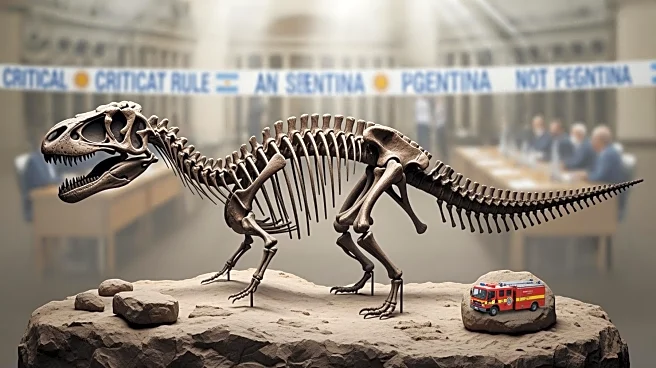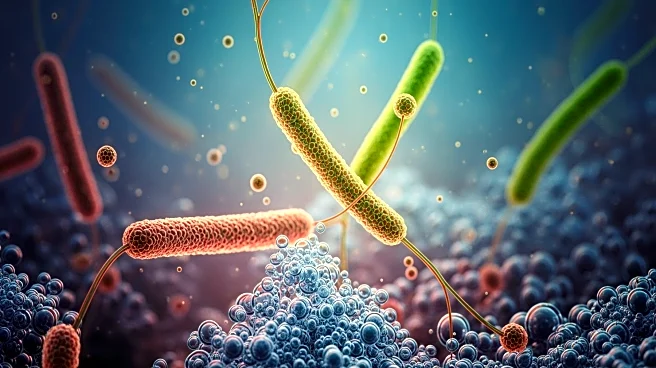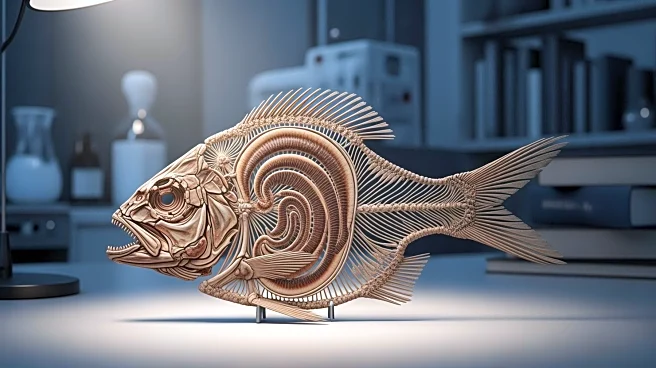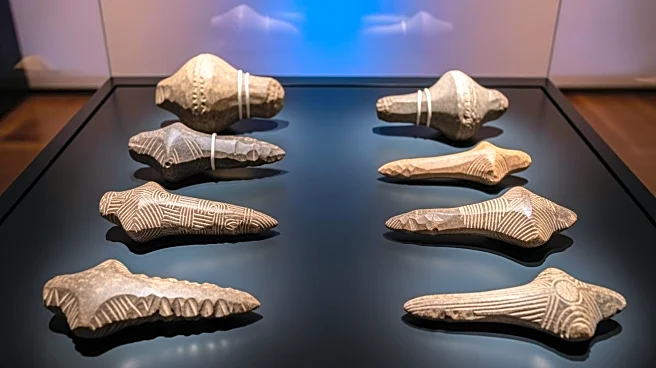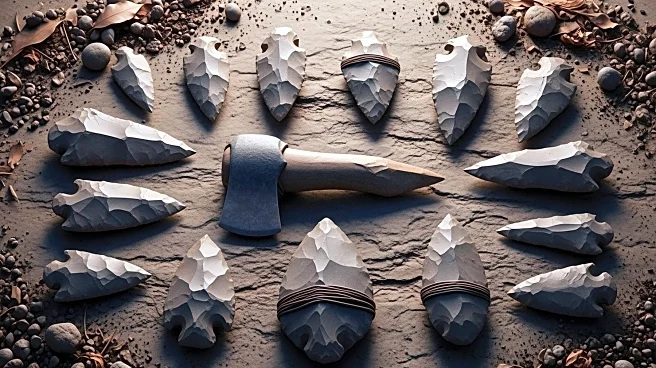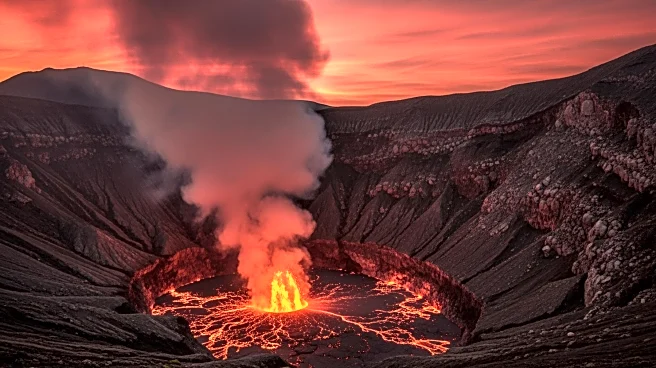What's Happening?
A significant discovery has been made in paleontology with the identification of the first-ever ankylosaur hatchling fossil, belonging to Liaoningosaurus paradoxus. This 115-million-year-old specimen provides
new insights into the early life stages of armored dinosaurs. Prior to this discovery, the fossil record primarily consisted of juvenile specimens, leading to speculation about the size and development of adult ankylosaurs. The hatchling fossil, discovered through histological analysis, shows rapid bone growth, confirming it as a hatchling rather than a small adult. This finding challenges previous assumptions about the size of Liaoningosaurus, suggesting it may not have been the smallest ornithischian dinosaur as previously thought.
Why It's Important?
The discovery of the Liaoningosaurus hatchling is crucial for understanding dinosaur growth and development. It provides direct evidence of the early life stages of ankylosaurs, offering insights into their growth patterns and environmental adaptations. This finding challenges previous assumptions about the size and characteristics of Liaoningosaurus, suggesting a more complex evolutionary history. The hatchling's anatomy differs significantly from other ankylosaurs, indicating diverse evolutionary paths. These insights contribute to a broader understanding of dinosaur growth, helping paleontologists reconstruct the life history of these fascinating creatures.
What's Next?
The discovery raises new questions about dinosaur evolution, particularly why so many juvenile fossils have been found without accompanying adult specimens. Researchers speculate that juvenile ankylosaurs may have lived near water, while adults inhabited different environments. This opens up new avenues for research into ankylosaur fossils, with future excavations potentially yielding more answers about their life cycles and habitats. The study encourages further exploration of how these armored dinosaurs adapted to their environment and what their developmental stages reveal about their evolutionary history.



